How to Buy a Rug ?

Buying a rug might be tricky if you are new to this. The right one can pull a room together, while the wrong one can make a room feel disjointed and unfinished.
There are lots of things to consider when choosing which rug is best for your home including room type, colour, design and size. Therefore, We asked interior designers and industry professionals what they recommend looking for to find a rug that won’t let you down.
Room Type
When considering your new rug, you should know which room are you going to buy for. Different rugs suit different areas. For example, a kitchen rug may not be a suitable choice for a high traffic living room. Please check our suggestions below for the different type of rooms and interiors.
For more detailed suggestion for your rooms, you can also have a look at our previous blog ( How To Choose a Rug for Your Home ).
Living Room
The living room is the social connection area of a home, so making sure it is suitable for guests and gatherings is a must.
Then consider a flatweave or low-pile rug that can withstand the wear and tear of heavy traffic.

Bedroom
Being the first thing your feet touch in the morning, bedroom rugs should be cosy and warm.
Then consider a polypropene which is more durable than other materials. You can have a look at our fluffy shaggy rugs which will bring comfort and cosiness.

Kitchen
Kitchens tend to have much more footfall than that of a bedroom or living room, therefore, it is best to choose a rug that is easy to clean.
Then consider polyester rugs. Our washable rugs collection is a great selection for every kind of kitchen.
Hallway
A rug/runner which is placed in a hallway or entryway needs to be harder-wearing and more resistant to dirt than, for example, lounge rugs or bedroom rugs.
Then consider durable and easy to clean rugs with polyester or polypropene material.
Garden/Patio
An outdoor rug must be very stain-resistant and easy to clean in order to place in both outdoor and indoor.
Then consider hard-wearing and water-resistant rugs with polypropene material.
Size
Measure your space and decide from there what dimensions will fit best. There are a few rules that you can apply to choose the correct size rug for your room.
Avoid the floating rug look in which you have a small rug in the middle of the room touching no furniture. Our biggest rule for rugs is that all furniture legs should be sitting on top of a rug.
If you are not sure what size will look best in your room you could try our size guide by simply clicking on Preview Size button on a product page. This will give you an idea of the size and if you will need to go bigger or smaller. Remember, the larger the rug, the more dominating the colour/pattern will be in the room.

Colour/Design
The design of the rug you choose is of course entirely up to you.
But as a general rule of thumb, it’s worth considering similar or opposite pattern and colour within the room’s decor to make a match.
For rooms that are minimalistic in look or plainer and more pared-back in their design details, we can suggest geometric design rugs which can add an eye-catching element to any space, without drawing attention away from the decor.
When your room is rather small and dark, it is recommended to select bright colours to intensify the reflection of the light. Darker rugs, on the other hand, can add additional warmth and cosiness to spacious rooms.
If you already have a colour selection in your mind for your interior, you can use our advanced filter option to find the best rug!
With our amazing colour filter option, you can even choose multiple colours to find your dream rug.

How do I choose the right rug?
Choosing the right rug involves considering several key factors. Measure your space carefully to ensure the rug fits properly. Consider the room's purpose and select a material that suits the traffic and use. The color and pattern should complement your existing decor. Don't overlook texture as it adds depth and interest. Finally, factor in your budget and maintenance preferences to find a rug that's both beautiful and practical for your lifestyle.
How can you tell a good rug?
A good rug exhibits several quality indicators. Look for dense, tightly woven fibers that feel substantial underfoot. Examine the backing for sturdy construction and even stitching. Natural materials like wool or silk often signify higher quality. Check for color consistency and pattern alignment. A good rug should lie flat without curling edges. For hand-knotted rugs, a higher knot count typically indicates better quality and durability.
How much should I pay for a good rug?
The price of a good rug varies widely based on size, material, and craftsmanship. For a quality 8x10 foot rug, expect to pay anywhere from ''500'' to ''5,000'' or more. Hand-knotted wool rugs start around ''1,000'' and can exceed ''10,000'' for premium pieces. Machine-made synthetic rugs are more affordable, ranging from ''200'' to ''1,000''. Remember, a well-made rug is an investment that can last for decades, so consider long-term value when budgeting.
Should a rug be darker or lighter than the floor?
The choice between a darker or lighter rug depends on your design goals. A rug lighter than the floor can brighten a room and make it feel more spacious. Conversely, a darker rug can ground the space and create a cozy atmosphere. For a harmonious look, choose a rug that's a few shades lighter or darker than your floor. The key is to create enough contrast to define the area without clashing with the overall room design.
What type of rug is most comfortable?
For maximum comfort, look for rugs with a plush, high pile. Wool rugs offer natural softness and insulation. Shag rugs provide a luxurious feel underfoot. Memory foam-backed rugs add extra cushioning. For a balance of comfort and practicality, consider medium-pile rugs in materials like cotton or synthetic blends. Remember, comfort is subjective, so feel samples in person when possible.
How do you judge a good rug?
Judging a good rug involves assessing multiple aspects. Feel the pile - it should be dense and resilient. Check the rug's weight - heavier rugs often indicate better quality. Look for even, tight stitching and well-finished edges. Natural fibers like wool or silk typically denote higher quality. For patterned rugs, the design should be clear and symmetrical on both sides. Consider the color fastness by rubbing a damp white cloth on the rug - quality dyes won't bleed easily.
How to value a Turkish rug?
Valuing a Turkish rug involves several factors. Age is crucial - older rugs are often more valuable. Assess the material quality, with silk and fine wool commanding higher prices. Knot density is important; more knots per square inch indicate higher quality. Rarity of design and color combinations can increase value. Condition is vital - well-preserved rugs are worth more. For accurate valuation, consider consulting an expert specializing in Turkish rugs.
How to tell if a rug is expensive?
Identifying an expensive rug involves looking for key indicators. Hand-knotted construction is a sign of high value. Natural, high-quality materials like silk or fine wool are common in expensive rugs. Look for intricate, complex patterns and vibrant, natural dyes. High knot count (over 200 knots per square inch) suggests premium quality. The rug should feel substantial and well-made. Renowned origins like Persia or Turkey often command higher prices. Certifications or provenance documentation can confirm a rug's value.
How do you match a rug at home?
Matching a rug at home requires considering your existing decor. Choose colors that complement or contrast with your furniture and walls. Consider the room's function - a busy pattern might work in a living room but not a bedroom. Texture should complement your furniture style. For an eclectic look, mix patterns but keep a consistent color palette. Use the rug to define spaces in open-plan areas. Remember, the rug should enhance your room's overall aesthetic, not overpower it.
What is the difference between cheap and expensive rugs?
The main differences between cheap and expensive rugs lie in materials, construction, and durability. Expensive rugs often use high-quality natural fibers like wool or silk, while cheaper ones use synthetic materials. Hand-knotted construction in expensive rugs offers superior durability compared to machine-made cheaper alternatives. Expensive rugs feature more intricate designs and higher knot counts. They also tend to have better color fastness and retain their appearance longer. Cheap rugs may look good initially but typically wear out faster.
What is the average life of a rug?
The average life of a rug depends on its quality and care. High-quality, hand-knotted rugs can last 50 years or more with proper maintenance. Machine-made wool rugs typically last 20-30 years. Synthetic rugs in high-traffic areas may need replacement after 5-7 years. Factors affecting longevity include material quality, foot traffic, maintenance routine, and environmental conditions. Regular cleaning and professional care can significantly extend a rug's lifespan.
How much should a rug in Morocco cost?
Rug prices in Morocco can vary widely. In markets, small rugs might start around ''50'' to ''100'', while larger, high-quality rugs can cost ''1,000'' or more. Berber rugs, known for their quality, might range from ''500'' to ''2,000'' for authentic pieces. Prices in tourist areas tend to be higher. Bargaining is expected and can significantly reduce prices. Remember, quality varies greatly, so inspect carefully. For the best value, consider purchasing from cooperative workshops where prices are often fair and quality is assured.
How to pick the perfect rug?
Picking the perfect rug involves several considerations. Measure your space accurately to ensure the right fit. Consider the room's function - durable materials for high-traffic areas, softer textures for bedrooms. Color and pattern should complement your existing decor. Think about maintenance - some materials are easier to clean than others. Feel the texture in person if possible. Consider your long-term design plans - a quality rug can be a lasting investment. Don't forget to factor in your budget, but remember that a good rug can transform a room.
What colour rug makes a room look bigger?
Light-colored rugs generally make a room appear larger. Cream, beige, or light gray rugs can create an illusion of more space by reflecting light. Cool tones like pale blue or soft green can also enhance the sense of openness. For a bolder approach, consider a large-scale pattern in light colors, which can create depth and make the room feel more expansive. Avoid dark or busy patterns in small spaces, as these can make the room feel cramped.
Should a rug match the sofa or walls?
A rug doesn't need to exactly match your sofa or walls, but it should complement them. Consider choosing a rug that incorporates colors from both your sofa and walls to tie the room together. If your sofa and walls are neutral, a rug can be an excellent opportunity to introduce color or pattern. For a more cohesive look, select a rug that's in the same color family as your sofa or walls, but in a different shade or tone. The goal is to create a harmonious balance in your space.
How do you know if a rug is nice?
Identifying a nice rug involves examining several aspects. Feel the pile - it should be dense and resilient. Check for even, tight stitching and well-finished edges. Natural fibers like wool or silk often indicate quality. For patterned rugs, the design should be clear and symmetrical on both sides. A nice rug lies flat without curling edges. Consider the color fastness by gently rubbing a damp white cloth on the rug - quality dyes won't bleed easily. The overall craftsmanship should feel substantial and well-made.
How much should a good quality rug cost?
The cost of a good quality rug varies based on size, material, and craftsmanship. For a quality 8x10 foot rug, expect to pay between ''800'' to ''3,000''. Hand-knotted wool rugs start around ''1,500'' and can exceed ''10,000'' for premium pieces. Machine-made rugs of good quality range from ''400'' to ''1,500''. Smaller rugs (4x6 feet) of good quality might cost ''200'' to ''800''. Remember, a well-made rug is an investment that can last for decades, so consider long-term value when budgeting.
What type of rug is healthiest?
The healthiest rugs are those made from natural, non-toxic materials that don't off-gas harmful chemicals. Wool rugs are excellent choices as they're naturally hypoallergenic and resist dust mites. Organic cotton rugs are another healthy option, free from pesticides and chemicals. Jute and sisal rugs are eco-friendly and don't trap allergens. For synthetic options, look for rugs certified by GreenGuard or other environmental standards. Avoid rugs with chemical treatments or backing materials that can release VOCs (volatile organic compounds).
What is the rule for rugs?
The primary rule for rugs is to choose the right size for your space. In living rooms, all furniture legs should either be on or off the rug. For dining rooms, ensure the rug extends at least 18 inches beyond the table edge. In bedrooms, the rug should extend 18-24 inches around the bed. Always leave a border of flooring visible around the rug's edges. Consider the room's function when selecting materials and pile height. Ensure the rug complements your decor without overwhelming the space. These guidelines help create a balanced, well-proportioned look in any room.
What makes a rug luxurious?
Several factors contribute to a rug's luxurious feel. High-quality materials like silk, fine wool, or premium synthetic fibers are essential. Hand-knotted construction with a high knot count (over 200 knots per square inch) adds to the luxury. Intricate, complex patterns and rich, vibrant colors from natural dyes elevate a rug's appeal. Plush, deep pile provides a sumptuous feel underfoot. Renowned origins like Persia, Turkey, or high-end European manufacturers often denote luxury. The overall craftsmanship and attention to detail in weaving and finishing touches contribute to a rug's luxurious quality.
How should a rug look under a sofa?
A rug under a sofa should follow certain guidelines for optimal appearance. Ideally, the rug should extend at least 6 inches beyond each side of the sofa. In larger rooms, aim for 12-18 inches of rug showing on all sides. The front legs of the sofa should always be on the rug. For a cohesive look, ensure all furniture in the seating area follows the same rule - either all legs on or just front legs on the rug. In smaller spaces, it's acceptable to have only the front legs on the rug. The key is to create a defined, balanced space that anchors your seating area.
How can you tell if a Turkish rug is good quality?
Identifying a good quality Turkish rug involves several factors. Check the knot density - higher knot counts indicate better quality. Examine the materials - fine wool or silk are premium choices. Look for hand-knotted construction, which is superior to machine-made. Natural dyes offer richer, more enduring colors than synthetic ones. Feel the pile - it should be dense and resilient. Inspect the pattern for intricacy and symmetry. Check the fringes - they should be an extension of the rug's foundation, not sewn on. A good quality Turkish rug will feel substantial and well-made overall.
Why does my Turkish rug smell?
Turkish rugs may emit odors for several reasons. New rugs might have a wool smell that dissipates over time. Older rugs may develop musty odors from storage or moisture exposure. Some rugs are treated with natural oils during production, which can have a distinct scent. Pet accidents or spills can cause lingering smells. To address odors, air out the rug in sunlight, use baking soda as a natural deodorizer, or consider professional cleaning. Persistent strong odors might indicate mold or mildew, which requires immediate attention to prevent damage.
Why are Turkish rugs special?
Turkish rugs are special for several reasons. They boast a rich cultural heritage dating back centuries. The craftsmanship involved in creating these rugs is often passed down through generations. Turkish rugs feature unique designs and motifs that often carry symbolic meanings. The quality of materials used, such as fine wool or silk, contributes to their durability and beauty. Hand-knotting techniques result in rugs of exceptional quality and longevity. The natural dyes used in traditional Turkish rugs create vibrant, long-lasting colors. These rugs are not just floor coverings but works of art that can appreciate in value over time.
How to value Turkish rugs?
Valuing Turkish rugs involves considering several factors. Age is crucial - older rugs are often more valuable. Assess the material quality, with silk and fine wool commanding higher prices. Knot density is important; more knots per square inch indicate higher quality. Rarity of design and color combinations can increase value. Condition is vital - well-preserved rugs are worth more. Size can affect value, with larger rugs often being more expensive. Provenance or documented history can significantly impact value. For accurate valuation, consider consulting an expert specializing in Turkish rugs, as subtle factors can greatly influence a rug's worth.
How do you choose the right rug?
Choosing the right rug involves several key considerations. Measure your space carefully to ensure the rug fits properly. Consider the room's purpose and select a material that suits the traffic and use. The color and pattern should complement your existing decor. Don't overlook texture as it adds depth and interest. Think about maintenance requirements based on your lifestyle. Consider your long-term design plans - a quality rug can be a lasting investment. Feel samples in person when possible. Finally, factor in your budget, but remember that a good rug can transform a room and last for years.
How to tell if a Persian rug is good quality?
Identifying a good quality Persian rug involves examining several aspects. Check the knot density - higher counts (over 200 knots per square inch) indicate better quality. Look for hand-knotted construction, which is superior to machine-made. Examine the materials - fine wool, silk, or cotton are traditional choices. Natural dyes offer richer, more enduring colors than synthetic ones. Inspect the pattern for intricacy and symmetry. Feel the pile - it should be dense and resilient. Check the fringes - they should be an extension of the rug's foundation, not sewn on. A good quality Persian rug will feel substantial and well-made overall.
What color rug goes with everything?
Neutral-colored rugs are the most versatile and go with virtually any decor. Beige, gray, and taupe are classic choices that complement most color schemes. For a bit more character, consider navy blue or sage green, which act as neutrals while adding subtle color. A multicolored rug with muted tones can also work with various decor styles and color palettes. Remember, the key is to choose a rug that has colors that harmonize with your existing furnishings and wall colors, creating a cohesive look in your space.
What to look for when buying a used rug?
When buying a used rug, pay attention to several key factors. Check for wear and tear, especially in high-traffic areas. Inspect for stains or discoloration that might be difficult to remove. Examine the backing for any damage or separation. Look for repairs and assess their quality. Smell the rug for any musty odors that might indicate mold or mildew. Check the edges and fringes for unraveling or damage. Verify the material and construction method. If possible, research the rug's history or provenance. Consider the cleaning and restoration costs that might be necessary. Lastly, ensure the price reflects the rug's condition and quality.
Can I use the same rug twice?
Yes, you can use the same rug twice, but consider a few factors. Rotate the rug to ensure even wear if using it in the same space. If moving to a new room, ensure it fits the new space both in size and style. Clean the rug thoroughly before reusing, especially if it's been in storage. Consider changing the orientation for a fresh look. If the rug shows wear, you might layer it with a new rug for added interest. Remember, high-quality rugs are designed to last and can adapt to different spaces over time, making them excellent investments for long-term use.
How much should a good rug cost?
The cost of a good rug varies based on size, material, and craftsmanship. For a quality 8x10 foot rug, expect to pay between ''800'' to ''3,000''. Hand-knotted wool rugs start around ''1,500'' and can exceed ''10,000'' for premium pieces. Machine-made rugs of good quality range from ''400'' to ''1,500''. Smaller rugs (4x6 feet) of good quality might cost ''200'' to ''800''. Remember, a well-made rug is an investment that can last for decades, so consider long-term value when budgeting. Factors like origin, age, and rarity can significantly impact price, especially for antique or collector's rugs.
How can you tell a quality rug?
Identifying a quality rug involves examining several aspects. Feel the pile - it should be dense and resilient. Check for even, tight stitching and well-finished edges. Natural fibers like wool or silk often indicate higher quality. For patterned rugs, the design should be clear and symmetrical on both sides. A quality rug lies flat without curling edges. Consider the color fastness by gently rubbing a damp white cloth on the rug - quality dyes won't bleed easily. Check the backing for sturdy construction. For hand-knotted rugs, a higher knot count typically indicates better quality and durability. The overall craftsmanship should feel substantial and well-made.
How do I choose the right rug?
Choosing the right rug involves considering size, style, and function. Measure your space and furniture arrangement to determine the appropriate dimensions. Consider the room's purpose and traffic to select a suitable material. Choose a style and color that complements your existing decor. Don't forget to factor in your budget and maintenance preferences when making the final decision.
How can you tell a good rug?
A good rug is characterized by its quality construction and materials. Look for dense, tightly woven fibers and even, consistent patterns. Check the rug's backing - it should be sturdy and well-finished. Natural fibers like wool or silk often signify quality. For machine-made rugs, examine the evenness of patterns and secure edges. A good quality rug should feel substantial and lie flat without curling at the edges.
How much should I pay for a good rug?
The price of a good rug varies widely depending on size, material, and craftsmanship. For a quality 8x10 foot rug, expect to pay anywhere from ''£500 to £5000''. Hand-knotted wool rugs are typically more expensive, while machine-made synthetic rugs are more budget-friendly. Invest in the best quality you can afford for high-traffic areas, as a well-made rug will last longer and maintain its appearance better over time.
Should a rug be darker or lighter than the floor?
The choice between a darker or lighter rug depends on your design goals. A lighter rug can brighten a space and make it feel larger, while a darker rug can add coziness and ground the room. Generally, aim for some contrast with your floor for visual interest. Consider the room's lighting and other furnishings when making this decision. Ultimately, the rug should complement your overall color scheme and enhance the room's atmosphere.
How do you judge a good rug?
Judging a good rug involves examining several factors. Feel the density of the pile - a denser rug typically indicates higher quality. Check the knot count in hand-knotted rugs; more knots per square inch usually mean better quality. Examine the color consistency and pattern accuracy. Look for natural materials like wool or silk. Consider the rug's origin and craftsmanship. A good rug should also lie flat, have even edges, and feel sturdy when you handle it.
Should your rug be bigger than your sofa?
Yes, your rug should generally be bigger than your sofa. A good rule of thumb is to have the rug extend at least 6 inches beyond each side of the sofa. This creates a more cohesive look and helps define the seating area. In larger rooms, aim for even more coverage, with all furniture legs resting on the rug for a unified appearance. A rug that's too small can make the room feel disjointed and actually make the space appear smaller.
How to value a Turkish rug?
Valuing a Turkish rug involves considering several factors. Age is crucial - older rugs are generally more valuable. Examine the material quality, with fine wool or silk commanding higher prices. Check the knot density; higher knot counts often indicate greater value. Assess the condition - well-preserved rugs are more valuable. Consider the rarity of the design and colors. Size also matters, with larger rugs typically being more valuable. For an accurate valuation, consult a professional appraiser specializing in Turkish or Oriental rugs.
How to tell if a rug is expensive?
Identifying an expensive rug involves looking for several key features. High-quality materials like pure wool, silk, or fine cotton are indicators of value. Hand-knotted construction with a high knot count suggests a more expensive rug. Look for intricate, detailed patterns and rich, natural dyes. Age and provenance can significantly increase a rug's value, especially for antique pieces. The rug's size and condition also play roles in determining its expense. Expensive rugs often have a substantial feel and a certain luster or sheen to their fibers.
How can you tell if a Turkish rug is good quality?
A high-quality Turkish rug exhibits several distinctive features. Look for tight, uniform knots - the higher the knot count, the better the quality. Check for natural dyes which produce rich, warm colors that improve with age. Pure wool or silk materials indicate superior quality. Examine the design complexity - intricate patterns suggest skilled craftsmanship. The rug should lie flat and have even edges. Good quality Turkish rugs often come with a certificate of authenticity. The fringe should be an extension of the rug's foundation, not sewn on separately.
Is it worth buying an expensive rug?
Investing in an expensive rug can be worthwhile for several reasons. High-quality rugs offer superior durability, often lasting for generations with proper care. They typically feature better materials like pure wool or silk, which maintain their appearance longer. Expensive rugs often have intricate designs and rich colors that can serve as stunning focal points in a room. They can also appreciate in value over time, especially hand-knotted or antique pieces. However, consider your lifestyle and budget - an expensive rug might not be practical in high-traffic areas or homes with young children or pets.
Which country makes the best rugs?
Several countries are renowned for producing exceptional rugs, each with unique characteristics. Iran (Persia) is famous for its intricate designs and high-quality wool rugs. Turkey is known for its vibrant colors and geometric patterns. India produces a wide variety of styles, including fine silk rugs. Morocco is celebrated for its bold, tribal designs. Nepal and Tibet are respected for their wool and silk rugs with contemporary designs. The "best" rug often depends on personal preference, but these countries are consistently recognized for their superior craftsmanship and traditional techniques.
What is the difference between cheap and expensive rugs?
The main differences between cheap and expensive rugs lie in their materials, construction, and durability. Expensive rugs often use high-quality natural fibers like wool or silk, while cheaper rugs may use synthetic materials. Expensive rugs are frequently hand-knotted or hand-tufted, offering greater detail and durability, whereas cheaper rugs are usually machine-made. The dyes used in expensive rugs are typically natural and colorfast, while cheaper rugs might use synthetic dyes that fade over time. Expensive rugs often feature more intricate designs and have a higher knot count, contributing to their longevity and visual appeal.
What colour rug makes a room look bigger?
Light-colored rugs generally make a room look bigger. Cream, beige, or light gray rugs can create an illusion of more space by reflecting light. However, the rug's pattern also plays a role - large-scale patterns or solid colors tend to expand the perceived space more than small, busy patterns. Cool colors like light blue or pale green can also create a sense of openness. For maximum effect, choose a rug color that's close to your flooring tone to create a seamless, spacious look.
Should a rug match the sofa or walls?
A rug doesn't need to match the sofa or walls exactly, but it should complement them. If your sofa and walls are neutral, a patterned or colorful rug can add visual interest. For bold sofas or walls, consider a more subdued rug to balance the space. The key is to create a cohesive look that ties the room together without being overly matchy. Consider choosing a rug that incorporates colors from both your sofa and walls for a harmonious effect.
Is a heavier rug better?
A heavier rug is often better quality and more durable. Weight can indicate denser fibers or a higher knot count, which typically means better wear resistance and longevity. Heavier rugs also tend to lay flatter and stay in place better. However, weight isn't the only factor - consider the rug's intended use, the quality of materials, and construction method when assessing overall quality. For high-traffic areas, a heavier rug might be preferable, but in some cases, a lighter rug could be more suitable, especially if frequent cleaning or moving is necessary.
What makes a rug luxurious?
Several factors contribute to a rug's luxurious feel. High-quality materials like pure wool, silk, or premium synthetic fibers are essential. Intricate, detailed patterns and rich, vibrant colors add to the luxurious appearance. Hand-knotted construction with a high knot count is often associated with luxury rugs. The thickness and density of the pile contribute to a plush, sumptuous feel underfoot. Unique or rare designs, especially in antique or limited-edition rugs, can also enhance the sense of luxury. Finally, the rug's origin and craftsmanship play a significant role in its perceived luxury value.
Should my rug touch the wall?
Generally, your rug should not touch the wall. Leaving some floor space visible around the edges of the rug helps define the space and makes the room feel more open. A good rule of thumb is to leave about 12-18 inches of bare floor between the rug and the wall in larger rooms, and 6-8 inches in smaller spaces. This approach also prevents the rug from looking like wall-to-wall carpeting and allows it to be a distinct design element in the room.
What is the best quality material for a rug?
The best quality material for a rug often depends on its intended use, but wool is generally considered top-tier. Wool rugs are durable, naturally stain-resistant, and maintain their appearance over time. For luxury, silk offers unparalleled softness and sheen, though it's less durable for high-traffic areas. Cotton is a good choice for casual spaces, offering affordability and easy cleaning. High-quality synthetic fibers like nylon or polypropylene can be excellent for high-traffic areas or outdoor use, offering durability and stain resistance. The best material ultimately depends on your specific needs, budget, and the rug's location.
How to pick a rug?
Picking a rug involves considering several factors. Start by measuring your space to determine the appropriate size. Consider the room's function and choose a material that suits the level of traffic and use. Think about the existing decor and select a style and color that complements your furnishings. Factor in your budget and long-term maintenance requirements. Don't forget to consider the rug's texture and how it feels underfoot. Finally, think about the mood you want to create in the room - a rug can significantly influence the overall atmosphere of a space.
Related Blog Posts
How to Choose Pet-Friendly Rugs
Related Rug Collections





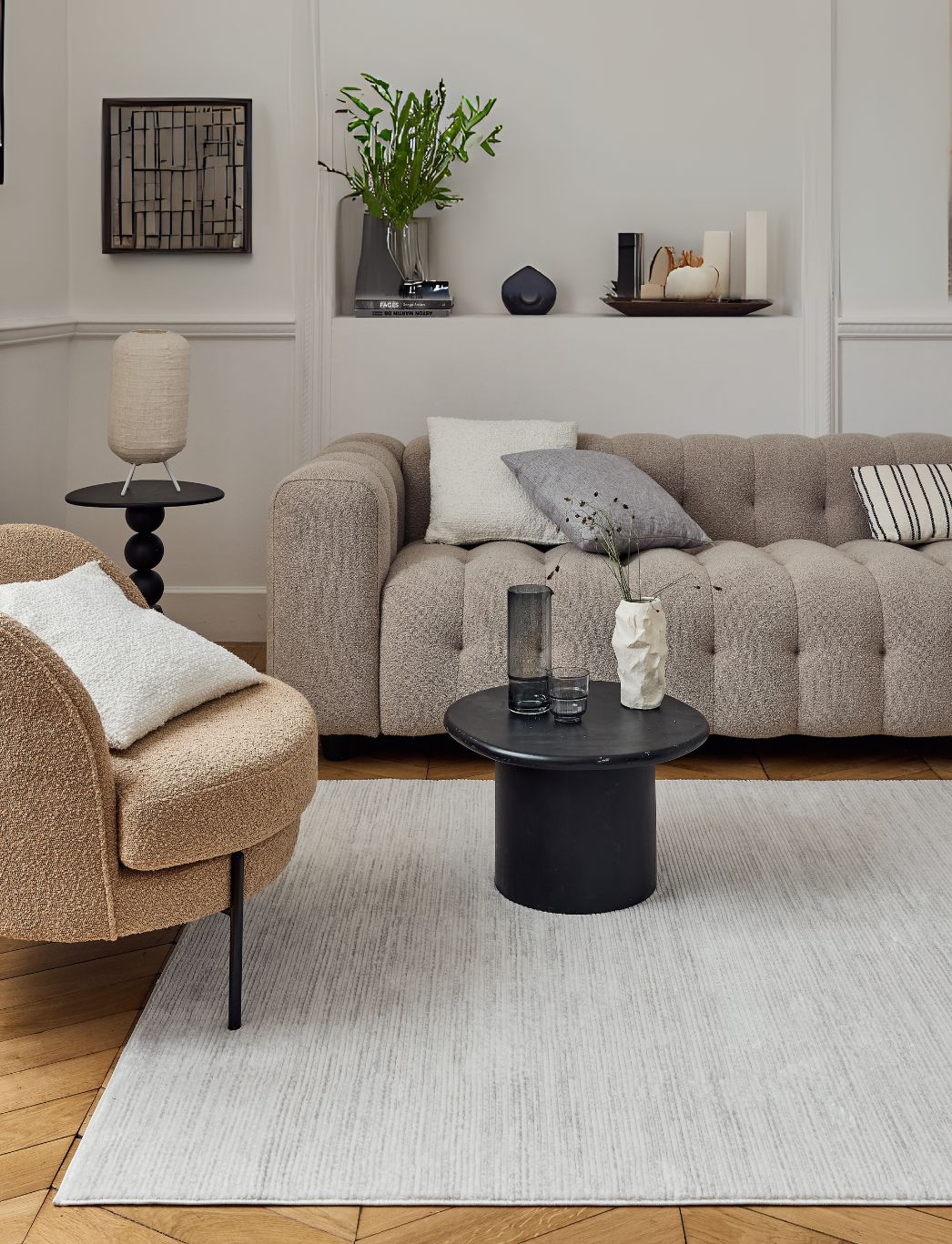
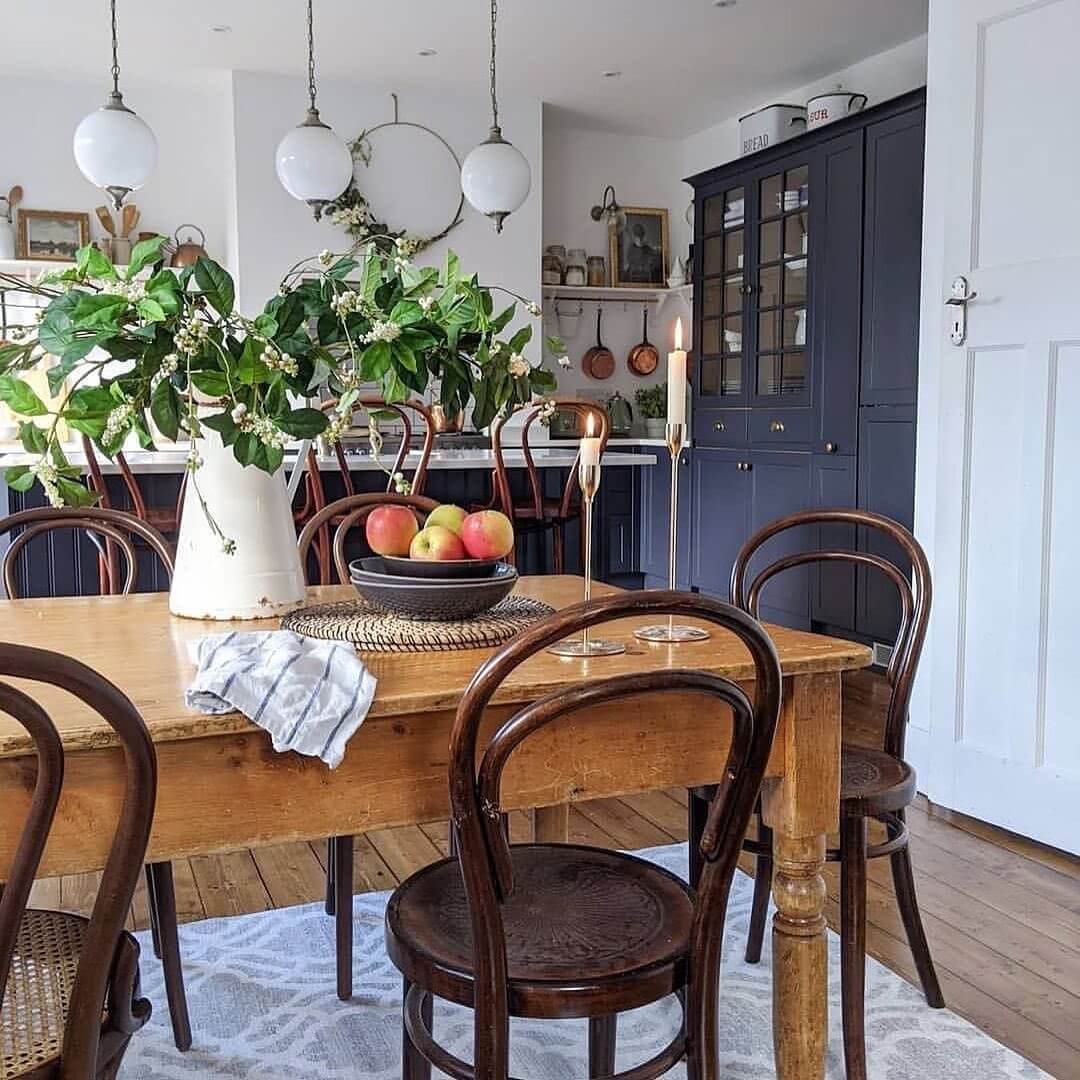
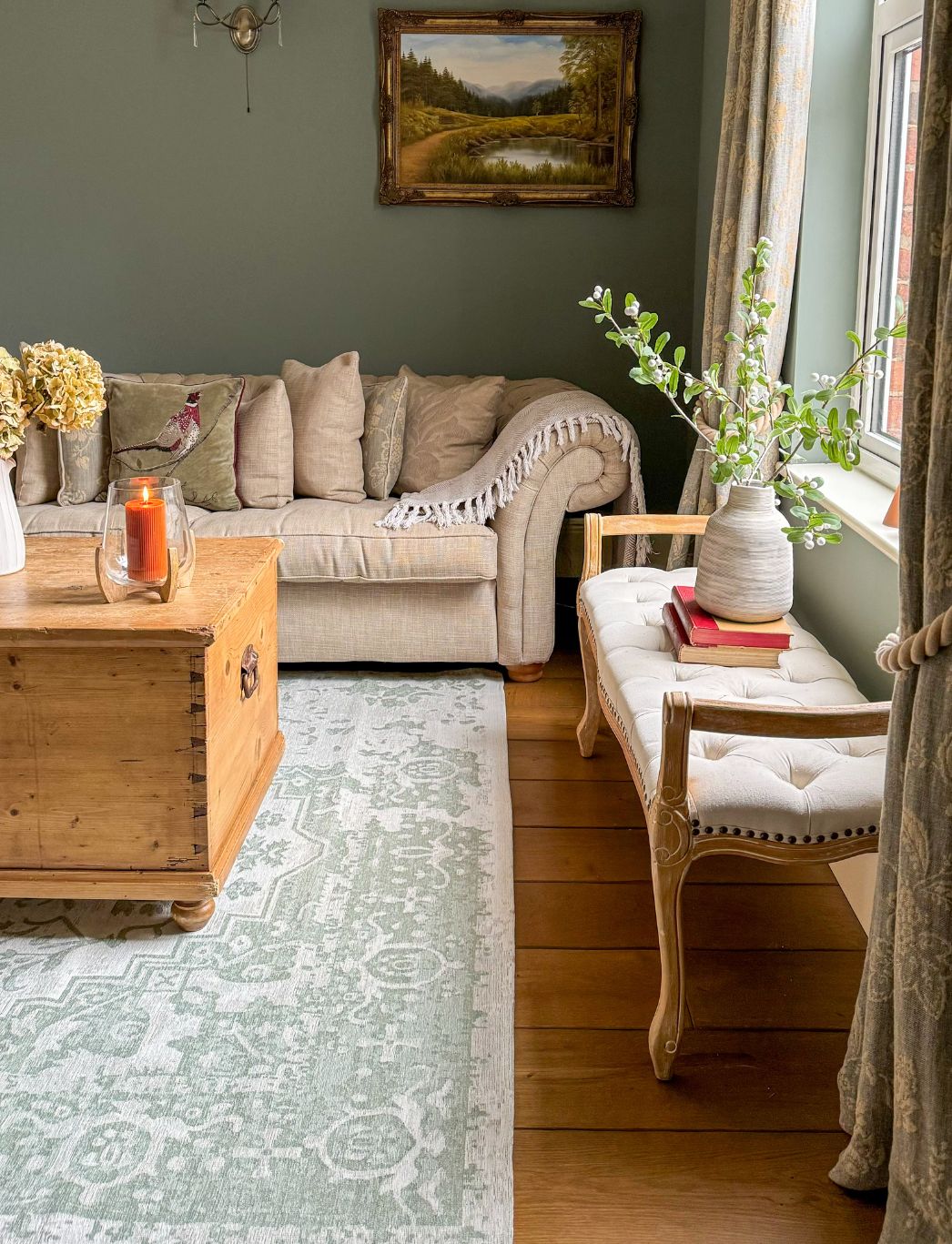
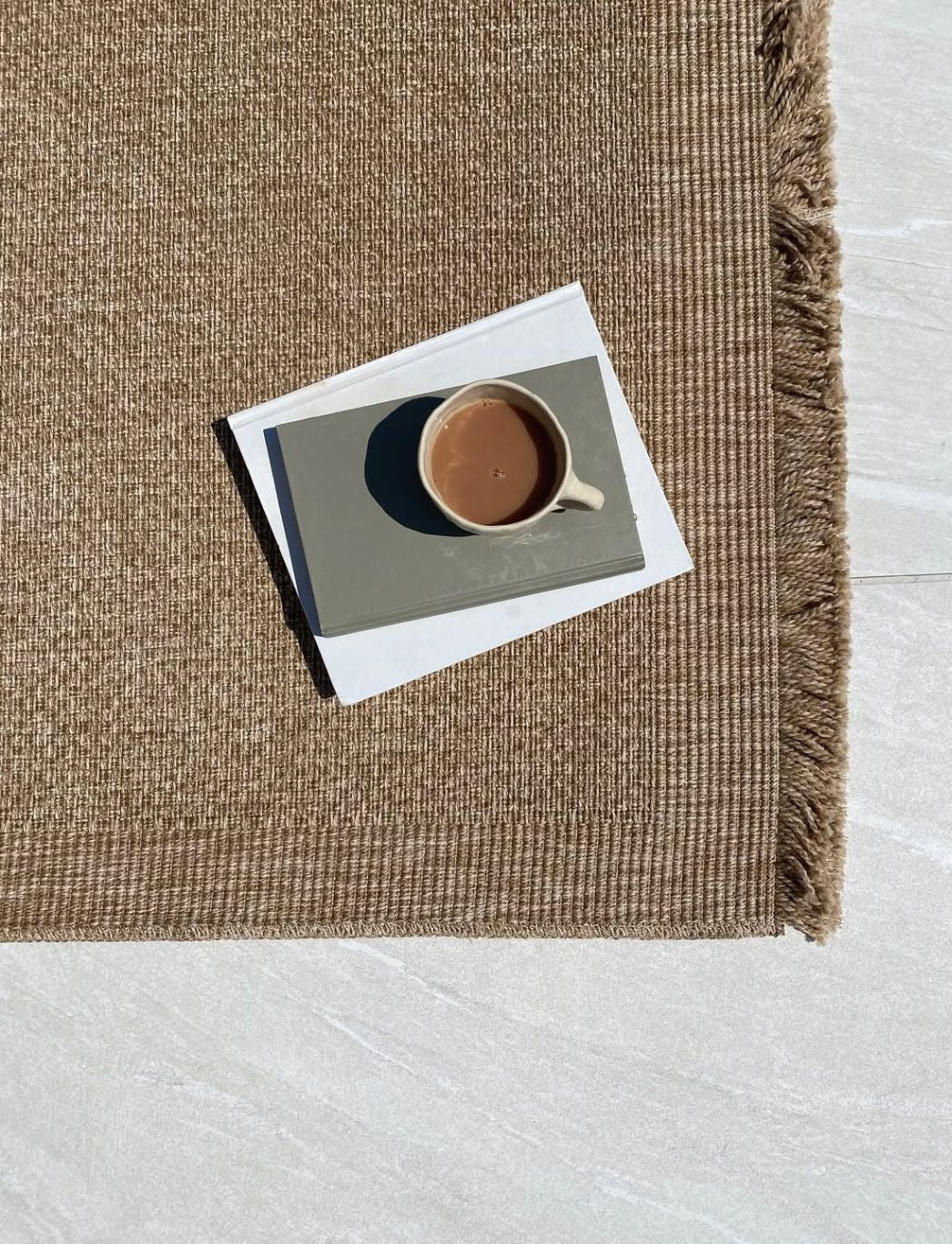
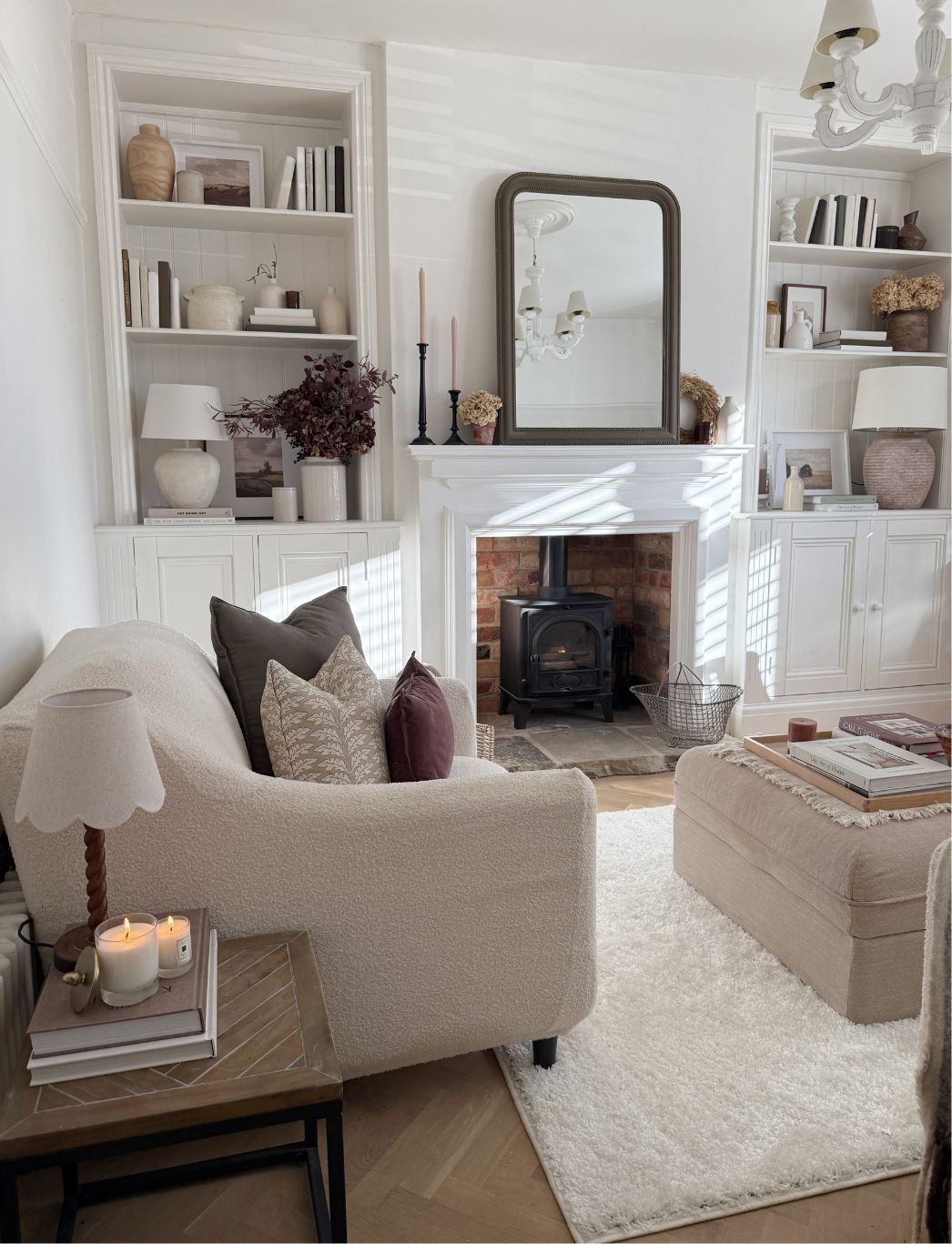
Leave a comment